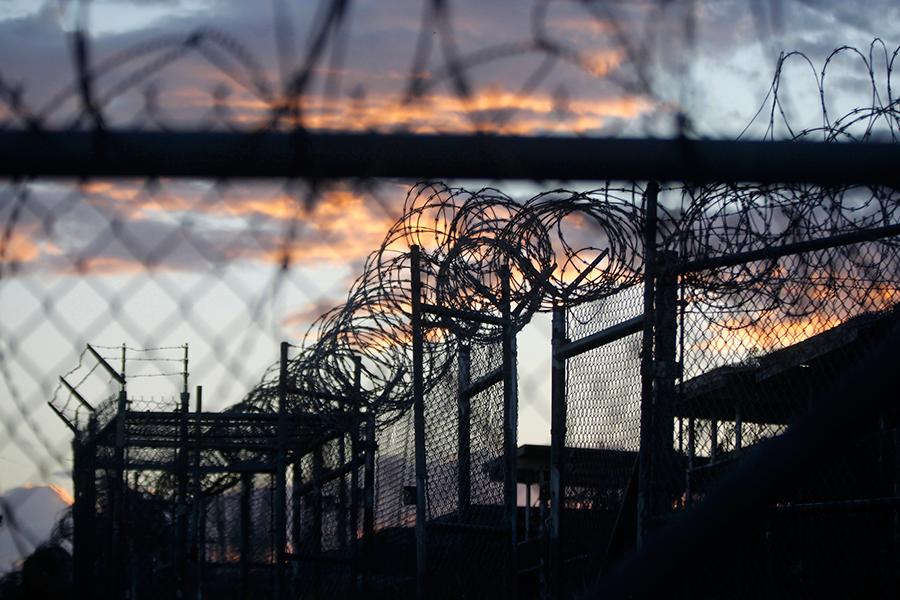What’s next for the prison at Guantánamo?
Loading...
Attorney General Jeff Sessions endorsed bringing in new detainees at the Guantánamo Bay facility in a radio interview on Thursday, saying he saw it as a “very fine place” to hold newly captured enemy combatants.
The remarks turn attention onto how the Trump administration could seek to reestablish what former President Barack Obama saw as a symbol of “an America that flouts the rule of law.”
“Eventually, this will be decided by the military rather than the Justice Department. But I see no legal problem whatsoever with doing that,” Mr. Sessions told conservative radio host Hugh Hewitt.
“We've spent a lot of money fixing it up. And I'm inclined to the view that it remains a perfectly acceptable place. And I think the fact that a lot of the criticisms have just been totally exaggerated,” he added.
President Trump is contemplating an executive order that would send fighters from the self-proclaimed Islamic State, Al Qaeda, the Taliban and associated forces to Guantánamo – a constant feature of several drafts, which at times included reopening CIA prisons and using interrogation techniques harsher than those included in the Army Field Manual, according to The New York Times.
Mr. Trump has for some time vowed a big expansion of Guantánamo, saying on the campaign trail that he would “load it up with some bad dudes.” And in an August interview with the Miami Herald, he suggested he favored trying US-citizen terrorist suspects arrested on the mainland using military commissions at Guantánamo.
“I know that they want to try them in our regular court systems, and I don’t like that at all. I don’t like that at all,” Trump told the newspaper. “I would say they could be tried there, that would be fine.”
That would amount to a radical reversal in policy for a facility where detainee expatriations have whittled numbers down to a core of several dozen whom a review board says cannot be released, yet have not been charged with any crime.
Secretary of Defense James Mattis was a vocal critic of Mr. Obama’s plans to transfer and release detainees, arguing that they should be held indefinitely until hostilities have ended – a status quo that some see as a violation of international law. But he has not echoed Trump’s apparent advocacy of extending the scope of military justice to terrorist suspects in the United States.
Whether courts might uphold such a plan is another question.
“The correct answer to that is, no, because the Constitution’s Treason Clause makes clear that citizens who act as an enemy are to be treated under criminal law,” says Madeline Morris, former State Department adviser on international and counterterrorism law who now directs the Guantanamo Defense Clinic at Duke Law School.
In any case, she adds in an interview with The Christian Science Monitor, “that issue would be thoroughly litigated.”
For Obama, the presidency-long struggle to close Guantánamo seemed to mean tilting the US away from post-9/11 militarism and toward more of a criminal justice-oriented approach, even if many supporters of the idea described the human rights abuses that took place at the prison in more emotional terms.
It was something of a lonely battle: even most Democrats were opposed to transferring detainees to US prisons, and in 2012, Congress passed a law banning it. Much of the public is uneasy about it, too: 56 percent said they opposed shutting the facility in a CNN/ORC poll from last March, including 83 percent of Republicans.
Conversely, his detailed, last-ditch plan to close it in 2016 drew criticism from civil-liberties advocates who saw the transfer of some inmates to the US for indefinite detention as the importing of an illegal system onto the mainland.
“The infamy of Guantánamo has never been its physical location but the illegal regime of indefinite detention without charge that underpins it,” Omar Shakir, a lawyer with the Center for Constitutional Rights, told the Intercept last February.
But the legal definitions that allowed the Bush administration to bring detainees there from battlefields in Afghanistan and Iraq could largely apply to new detainees – like IS fighters from Iraq and Syria.
“There would not need to be any change made in order for detainees to be held there,” says Ms. Morris.
In a December report, the Obama White House laid out arguments for why a preexisting Authorization for Use of Military Force (AUMF) allows the US to use force against Islamic State militants. That means IS fighters could be taken to Guantánamo for detention, too, she says.
"If you can use force in the sense of an armed conflict, then you can certainly take prisoners."





